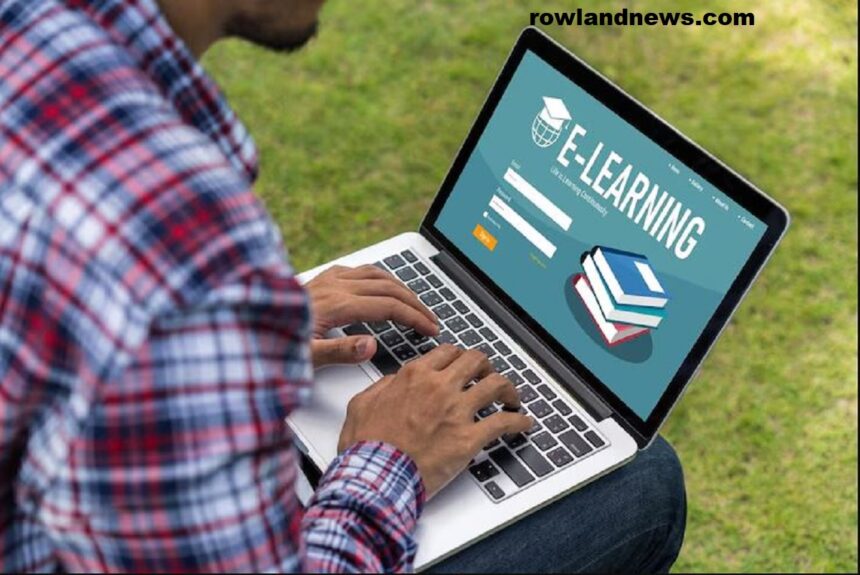The Future Of The Classroom Is Already Here
Imagine you walk into a classroom and instead of the traditional rows of desks and whiteboard at or about halfway across the room, students are wearing VR headsets, chatting with classmates from other continents, and using an AI tutor who can read their learning speed. This is not science fiction–this is education’s future.
Digital learning is no longer a luxury option; it’s rapidly becoming fundamental to how we teach and learn. Tools such as remote learning platforms and AI-driven assessments are modernizing education at every scale. But what really matters for students, teachers, and schools? We’ll explore how digital learning is changing education— and why this shift matters more than ever today.
What Is Digital Learning?
It’s using technology to enhance and personalize the educational experience. This can be anything from courses online, smartphone apps, or interactive whiteboards on tablets. Virtual classrooms—where you can see but not touch your classmates–are another aspect of this kind of learning. AI tutors, digital textbooks and learning management systems (LMS) also count as examples of what we mean by “digital learning.”
Digital learning is open in time and place much more than traditional instruction (and also instruction). It CAN be:
- Free (or low-cost)
- Irrelevant of where you are in the world
- Equal opportunities for everyone in the social sphere
It is:
- Flexible – Students can study at any time, anywhere
- Personalised – Content meets the needs and matches the speeds of all types of learners
- Multisensory – It uses audio, video games with a touch screen reply mode (this app can be downloaded from the Internet) to create a new world
- Real-time feedback from teachers and pupils alike
- Tracking and assessing progress right away in the classroom
The Key Ways Digital Learning Is Transforming Education
Personalized Learning Paths
In a traditional classroom setting, one teacher must cope with 20 or more students, all of whom have different abilities, learning styles, and learning speeds. However, digital learning tools, such as adaptive learning software, utilize algorithms to adjust the content according to each student’s performance.
Example: Platforms like Khan Academy and DreamBox adjust to students’ feedback in real time, providing individually tailored support and enrichment activities.
This transition, from a one-size-fits-all education approach to one that meets the needs of each student, can help close achievement gaps and support students who might otherwise fall behind.
Breaking Down Geographical Barriers
Good education has always been connected to where people reside (“trickle-down location”). But digital learning has changed this. In rural and remote areas, children can now study on the same level as their city counterparts who live in upper-tier neighborhoods.
For instance, During the COVID-19 pandemic, many schools made computer systems like Google Classroom and remote learning the norm. Although this change was far from perfect, it demonstrated that students do not need to be tied to a physical classroom in order to learn.
Through partnerships with companies like Apple and Cisco Systems, the U.S. Department of Education is working on achieving digital inclusion, ensuring that every student has access to both the internet and essential electronic tools.
Empowering Teachers with Better Tools
Technology is not meant to replace teachers; it can help them perform their jobs more effectively.
With instruments like AI-powered customer support systems, lesson-omitting platforms, or data-rich dashboards, educators are now able to deploy their calmer-minds-and-better-informed (or stillness) approach.
For example, teachers can interact with parents, read, work and examine student grades all in one platform using systems like Edmodo or ClassDojo.
These tools also make it easier to spot at-risk students early and intervene before it is too late.
Immersive Learning With AR And VR Technology
One of the most exciting frontiers in digital learning is the use of augmented reality (AR) and virtual reality (VR) to give students immersive educational experiences.
Pupils are literally transported to ancient Rome without leaving their computer screens and take a 3-D trip through the dissection of a frog. It provides a valuable learning experience that yields insights that translate into real knowledge.
For instance, schools have already begun working with programs like Nearpod and ClassVR on this. Such experiences will soon be part of everyday life in the classroom.
According to a survey conducted by EDUCAUSE, today’s students may be motivated and retention rates have increased 30% with VR technology.
Fostering Lifelong Learning and Digital Literacy
When students leave school, digital learning doesn’t stop. In a rapidly changing job market, the ability to learn to use new software and write code is priceless.
By exposing students to digital tools and encouraging them to pursue their studies, schools are preparing the next generation for a world where lifelong learning will be the norm.
For example, platforms like Coursera and edX partner with universities such as MIT and Harvard to offer college-level courses online, sometimes free to students.
This democratization of knowledge has enabled students from all walks of life to pursue their dreams, regardless of cost or location.
Read Also: What School Clubs Does Accelerate Education Offer?
Challenges to Overcome
While the benefits of digital learning are clear, it’s not without its challenges:
- Digital divide – Not all students have access to reliable internet or devices.
- Teacher training – Many educators need professional development to effectively use new tools.
- Screen fatigue – Too much screen time can affect health and engagement.
- Privacy concerns – With the increasing collection of data, safeguarding student privacy is crucial.
Addressing these challenges will require thoughtful policy, investment, and collaboration across sectors.
Why This Matters: The Bigger Picture
Education is the foundation of society. If we enhance the way students learn, everything else, from economic growth to social equity, will also improve.
Digital learning can make education more inclusive, efficient and engaging than ever. But it all depends on how we choose to implement it: with purpose, creativity, and empathy.
Final Thoughts: Now Is the Time
Whether parents, educators, or policy makers, we are the first generation with the devices in hand to shape our future now.
Knowing is Key
Whether a teacher is eager to get new ideas into the classroom or a parent who wonders how their school will develop, keep abreast if you want to be informed. Click here to learn more!
Start with tools like Common Sense Media Education (for edited digital learning resources) or review the integration plans for technology in the district in which your child’s school is located.
Together, let’s take this digital transformation with us and ensure that no learners are left behind.
Was this article helpful to you? Please share it with a peer parent or educator. Things learn to value increase whenever two people educate each other.














